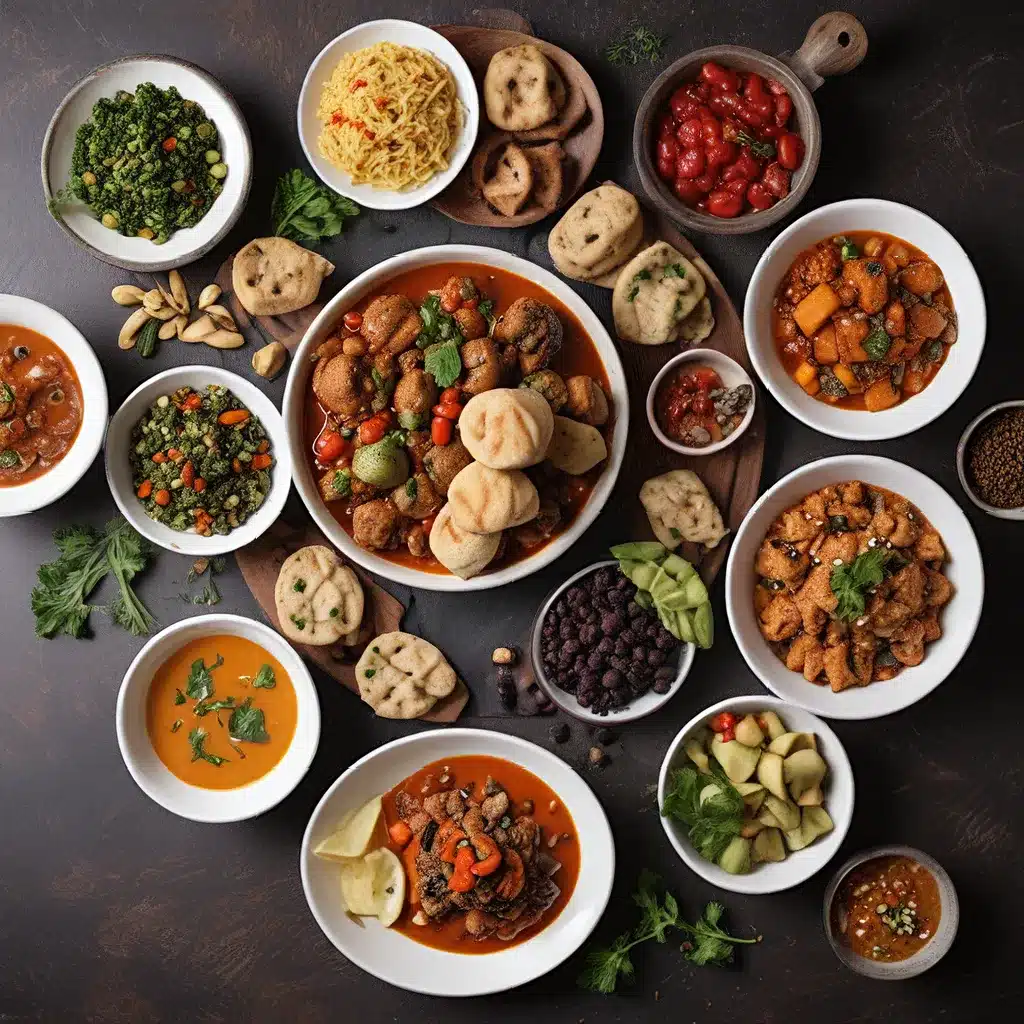
Ah, fusion cuisine – the culinary equivalent of a global potluck, where diverse flavors and traditions come together to create something truly magical. As a self-proclaimed food enthusiast, I’ve always been fascinated by this culinary trend that’s been captivating the taste buds of adventurous eaters worldwide.
The Rise of Fusion Cuisine
It all started with pioneers like the renowned chef Wolfgang Puck, who in the 1980s seamlessly combined French and Asian culinary techniques at his iconic restaurant Spago. His innovative approach, like the famous Chinois Chicken Salad, marked the beginning of a new era in gastronomy where chefs began to experiment with unconventional flavor combinations and cross-cultural techniques.
Fusion cuisine is, at its core, a product of globalization and cultural exchange. As travel and communication have become more accessible, the world has transformed into a melting pot of cultures, and this fusion of cultures is reflected in the culinary landscape. People from different backgrounds bring their unique culinary traditions with them, creating a rich tapestry of flavors that chefs and food enthusiasts can draw inspiration from.
In the United States, fusion cuisine has flourished as a result of the diverse cultural landscape. Chefs have embraced the fusion of Mexican and American flavors in dishes like Korean-inspired tacos or Vietnamese-inspired banh mi sandwiches. These creations have become staples in food trucks and trendy restaurants, offering a tantalizing mix of flavors that reflects the multicultural essence of the country.
Blending Traditions, Honoring Heritage
But fusion cuisine is not limited to any specific set of cuisines or regions. It’s a dynamic and evolving style that draws inspiration from various culinary traditions. In Europe, for example, fusion cuisine has taken root, blending traditional European flavors with influences from the Middle East, Africa, and Asia. Chefs experiment with ingredients and spices, incorporating Moroccan spices into French cuisine or infusing Italian dishes with Indian spices, creating a delightful fusion of tastes and aromas.
One of the keys to successful fusion cuisine is maintaining a delicate balance of flavors. Chefs must have a deep understanding of the ingredients they are working with and the cultural context from which they originate. It’s not simply a matter of combining random ingredients, but rather a thoughtful and intentional process that respects and honors the traditions being fused.
Through careful experimentation and creativity, chefs are able to create harmonious dishes that celebrate the best of multiple culinary traditions. As some experts believe, keeping certain dishes sacred by staying true to their tradition is just as important as exploring the possibilities of fusion cuisine. It’s all about finding the right balance and educating the customer on the cultural significance of the flavors they’re experiencing.
The Art of Fusion
Fusion cuisine also extends to the realm of fine dining, where renowned chefs push the boundaries of culinary innovation. They meticulously blend ingredients and techniques from different cultures to create sophisticated and visually stunning dishes. These culinary masterpieces not only tantalize the taste buds but also captivate the eyes, highlighting the artistic nature of fusion cuisine.
One such example is the Saint Marc restaurant, where the team of chefs has mastered the art of fusion by seamlessly blending diverse culinary traditions into their dishes. Their menu features a harmonious fusion of flavors, textures, and cooking techniques that transport diners on a global culinary adventure.
But the rise of fusion cuisine has not been without its controversies. Some argue that by blending different culinary traditions, the authenticity and integrity of individual cuisines are compromised. However, proponents of fusion cuisine see it as a way to celebrate diversity and promote cultural exchange. It’s an opportunity to showcase the beauty of different culinary traditions while pushing the boundaries of creativity and innovation.
The Future of Fusion
As fusion cuisine continues to evolve, chefs are finding inspiration in unexpected places, drawing influences from street food, traditional cooking methods, and even molecular gastronomy. This constant evolution keeps fusion cuisine fresh and exciting, as new combinations and techniques are discovered.
Moreover, fusion cuisine has played a crucial role in breaking down cultural barriers and fostering a sense of community. Sharing a meal that blends flavors from different parts of the world can be a unifying experience, promoting understanding and appreciation for diverse cultures.
The popularity of fusion cuisine has also extended beyond the walls of restaurants, with home cooks and food enthusiasts embracing the concept and experimenting with their own fusion creations in their kitchens. Cooking shows and social media platforms have become platforms for sharing fusion recipes and techniques, creating a global community of culinary explorers.
As the culinary landscape continues to evolve, it’s evident that fusion cuisine will undoubtedly remain at the forefront of culinary innovation, creating new culinary experiences that delight and inspire food lovers worldwide. Whether you’re a seasoned foodie or a curious home cook, the world of fusion cuisine is a delightful playground waiting to be explored. So, why not embark on your own culinary adventure and discover the magic that happens when cultures collide on the plate?

